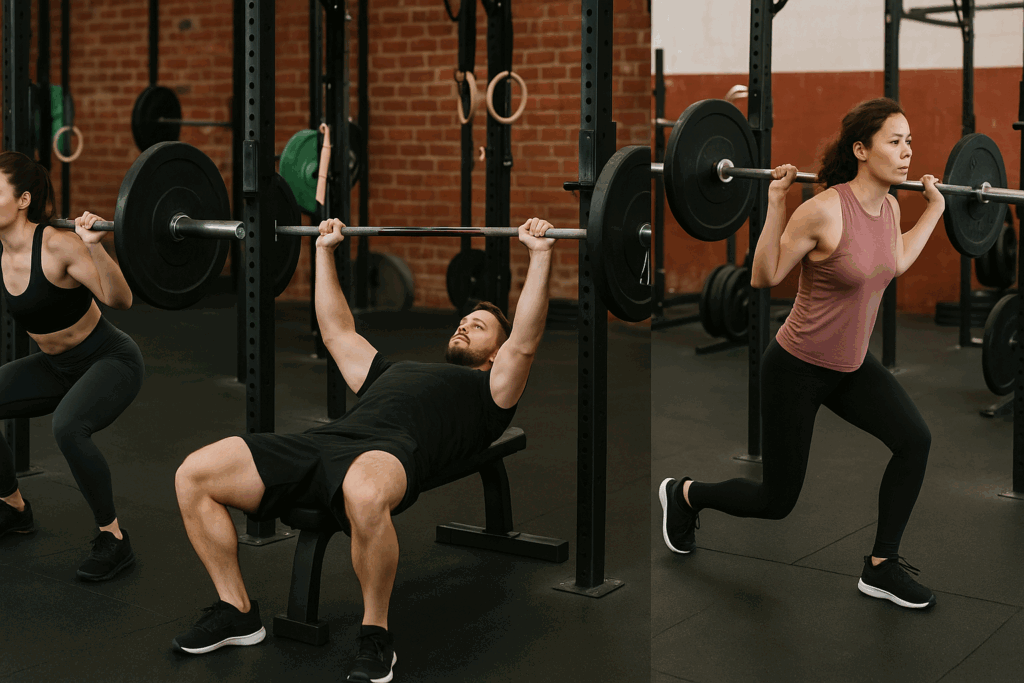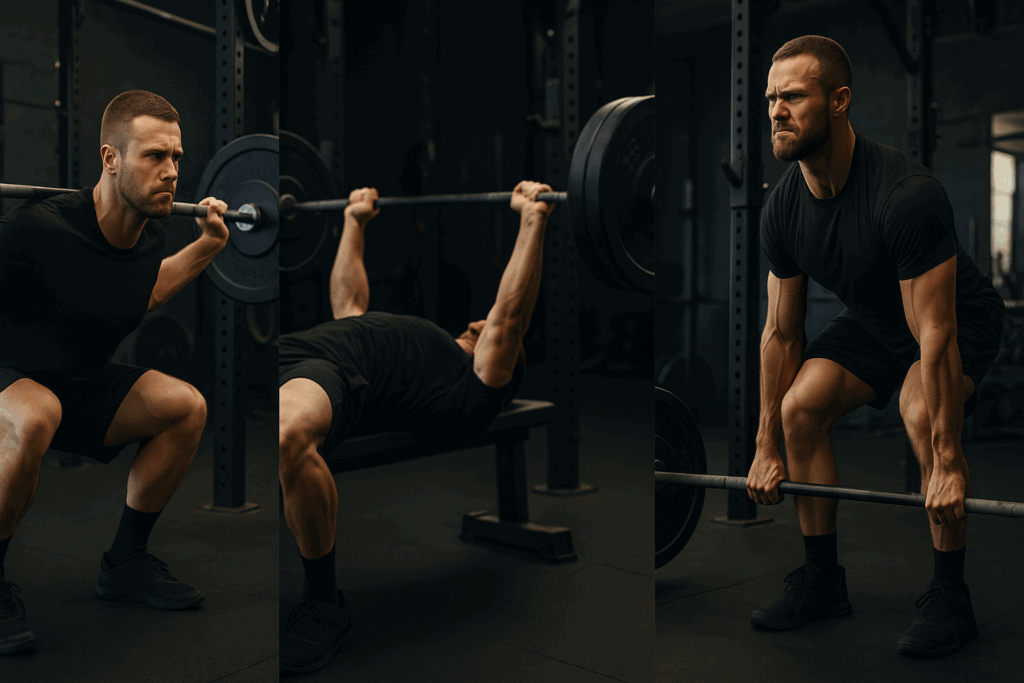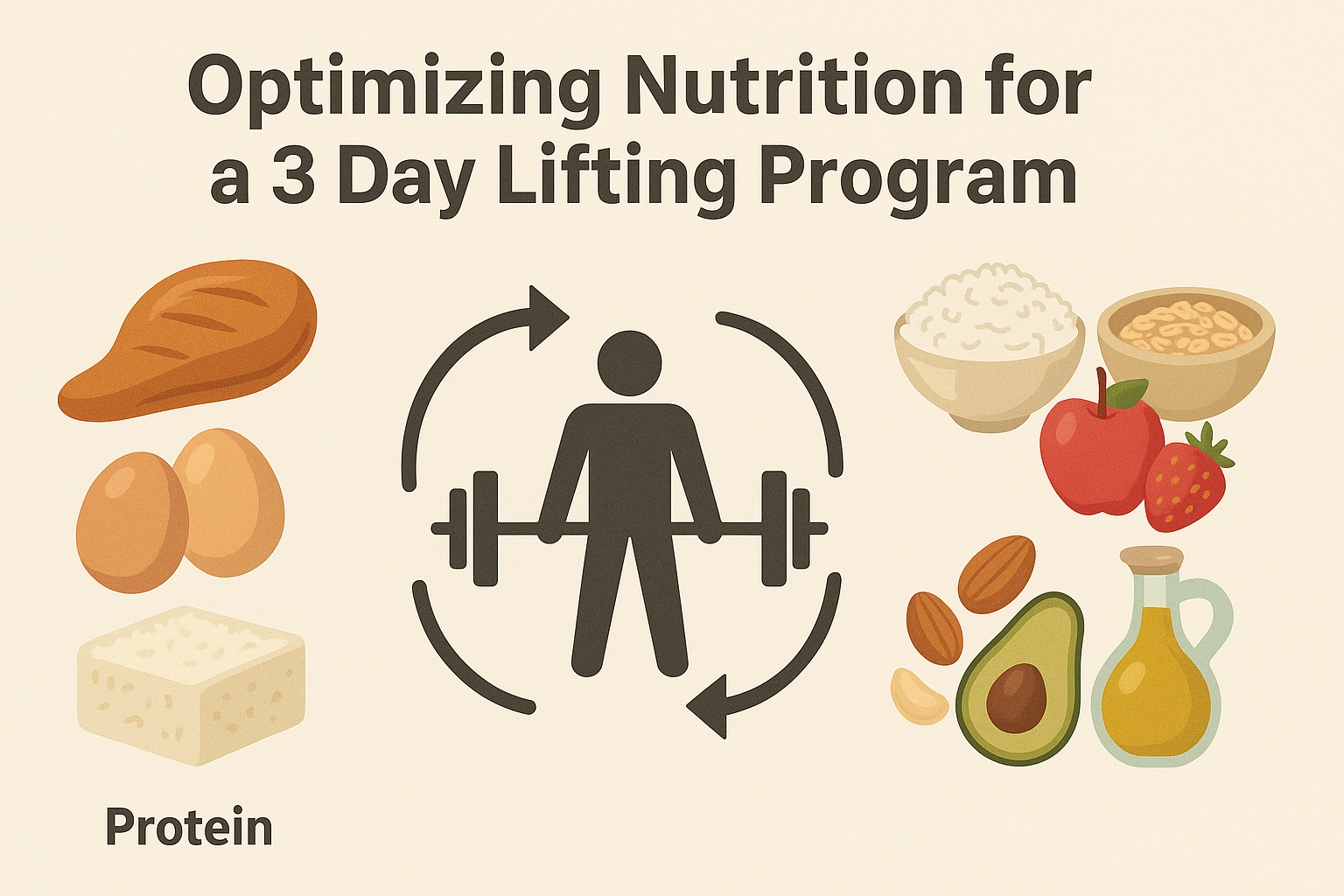Building muscle doesn’t always demand grueling six-day-per-week schedules or endless hours in the gym. For many people, a well-structured workout routine 3 days a week can unlock incredible gains in strength and muscle size without compromising recovery or increasing the risk of overtraining. This focused, efficient approach aligns with current exercise science and offers a sustainable strategy for those juggling busy lives while remaining committed to their fitness goals.
Working out 3 days a week provides a balance between stimulation and recovery that is often overlooked in more traditional high-frequency programs. By training smartly with a full-body focus or a well-designed split, lifters can stimulate hypertrophy and improve overall strength while enjoying sufficient rest for muscular repair and adaptation. This approach isn’t just convenient—it’s remarkably effective, especially when grounded in progressive overload, compound movements, and strategic programming. Let’s explore how a 3 day a week fitness plan can be your key to transformative strength gains and lasting results.
You may also like: The Ultimate Hypertrophy Workout Program for Building Strength and Size

Why Working Out 3 Days a Week Works for Muscle Growth
Contrary to the misconception that more is always better, science and practical experience consistently show that quality trumps quantity in strength training. A 3 day workout plan leverages this by emphasizing intensity, exercise selection, and recovery—the true pillars of muscle development. With fewer sessions, each workout carries greater purpose and focus. You’re not just checking boxes; you’re optimizing every lift.
The key mechanism behind muscle growth is progressive overload, which refers to gradually increasing resistance or volume over time. This can be achieved through a 3 day lifting routine just as effectively as with more frequent sessions. The body doesn’t necessarily need daily gym exposure; it needs stimulus, followed by recovery and supercompensation. With a 3 day strength training split, the body gets adequate time to repair, adapt, and grow stronger. This is especially vital for natural lifters not relying on enhanced recovery aids.
Research supports the efficacy of moderate-frequency training. Studies published in journals like the Journal of Strength and Conditioning Research indicate that training each muscle group two to three times weekly is ideal for hypertrophy. This makes a 3 day workout split perfectly suited to align with optimal frequency. Whether it’s a full body workout 3 days a week or a strategically crafted split, the method can match or even exceed the gains achieved with more frequent schedules when done correctly.

The Science Behind Muscle Growth with a 3 Day Split
Muscle adaptation follows a predictable cycle: stimulus, recovery, and supercompensation. This physiological cycle underpins the design of a 3 day split program. When muscles are trained, they incur microscopic damage. With adequate nutrition and rest, these tissues rebuild stronger and larger than before. Interrupting this cycle with excessive frequency can hinder progress, making the 3 days a week training program ideal for growth and performance.
The effectiveness of a 3 day lifting program stems from the principle of maximal efficiency. Each workout can be structured to include major compound lifts such as squats, deadlifts, presses, and pulls. These exercises recruit multiple muscle groups and generate hormonal responses that favor hypertrophy. When paired with accessory movements targeting specific weaknesses, the 3 day exercise split becomes a complete system for building muscle.
Another important factor is volume load—the total amount of weight lifted per session and over time. A 3 day lifting split allows for sufficient volume while avoiding cumulative fatigue. By planning sessions to rotate movement patterns and muscle group emphasis, athletes can maintain high levels of output with reduced risk of injury or stagnation. As a result, the 3 day gym split becomes not just a convenience, but a tool for long-term progression.

Designing an Effective Workout Routine 3 Days a Week
Crafting an efficient 3 day workout plan requires thoughtful integration of key training principles: frequency, intensity, volume, and specificity. A popular and effective approach is the 3 day full body workout, where each session targets all major muscle groups. This ensures high frequency per muscle group and supports steady hypertrophy over time.
A typical 3 day full body split might include squat variations, hinge movements like Romanian deadlifts, horizontal and vertical presses, pulling movements such as rows or pull-ups, and core stabilization exercises. The goal is not to exhaust each muscle but to stimulate them sufficiently to grow and recover. Emphasis on progressive overload remains paramount, whether through increased resistance, more reps, or improved execution.
Alternatively, a split workout routine 3 day style may follow a push/pull/legs structure. This divides workouts by movement pattern, allowing each session to focus more intensely on specific muscles. A push day would include bench presses, overhead presses, and triceps work. A pull day would emphasize rows, chin-ups, and biceps. The leg day would center around squats, lunges, and posterior chain development. This version of a three day split promotes balance, focus, and full recovery.
Regardless of the format, success with a 3 day lifting routine hinges on program adherence, smart progression, and adequate nutrition. Each week builds upon the last, with microcycles and deloads to prevent burnout. This approach caters to long-term growth while fitting seamlessly into demanding schedules.

Maximizing Results with a Full Body Workout 3 Days a Week
The full body approach to a 3 days a week gym workout is favored for its efficiency and high frequency of muscular engagement. When executed correctly, each session stimulates the entire body, promoting more frequent protein synthesis and neural adaptation. This is especially beneficial for beginners and intermediates seeking generalized strength and size improvements.
An optimal full body workout 3 days a week balances movement categories within each session. For example, Monday may feature a squat focus with supporting upper body lifts. Wednesday may emphasize the deadlift, with accessory pushing and pulling. Friday could pivot to the bench press as the central lift, paired with supporting lower and upper body work. This ensures that no muscle group is neglected and all planes of motion are trained throughout the week.
Programming variety is key to avoid adaptation and plateau. This includes altering exercise selection, rep ranges, and tempo. For instance, incorporating pause squats, deficit deadlifts, and incline presses can challenge muscles in new ways. Additionally, integrating explosive work such as jump squats or power cleans can enhance neuromuscular efficiency and athleticism.
Recovery protocols become particularly important with this method. A 3 day a week workout schedule requires optimized rest, nutrition, and mobility practices. Without sufficient recovery, the volume and intensity of full body sessions can become taxing. Sleep, hydration, and nutrient timing must align with training demands to fully harness the benefits of a three day workout routine full body style.

Strategic Programming: The 3 Day Strength Training Split
A 3 day strength training split prioritizes foundational lifts and performance metrics. While hypertrophy remains a beneficial byproduct, the central goal here is absolute strength development. This version of a 3 day training split aligns well with goals like increasing one-rep maxes in the squat, bench, and deadlift, and it often incorporates periodized cycles.
Strength-focused programming typically involves lower rep ranges (3–6 reps), higher rest periods, and compound-centric sessions. Monday may revolve around the squat with supportive posterior chain work. Wednesday could emphasize pressing, while Friday targets deadlift variations and pulling strength. Accessory work targets weaknesses and reinforces structural integrity.
The 3 day split training routine built around strength necessitates calculated progression models. These may include linear progression, undulating periodization, or conjugate-style templates. Each method provides structure and ensures that performance improves without plateaus or regressions. Metrics are tracked closely, and deload weeks are implemented to consolidate gains and prevent overreaching.
A strength-oriented 3 day lifting split can also benefit hypertrophy indirectly. Lifting heavier loads recruits more motor units and stimulates fast-twitch muscle fibers, which are particularly responsive to growth. When paired with adequate volume and metabolic stress, the result is a hybrid blend of size and strength gains. This makes the best three day workout split one that balances neural and muscular demands.
The Psychological Advantage of Working Out 3 Days a Week
Beyond the physiological adaptations, a 3 day a week workout schedule offers notable psychological benefits. Burnout and fatigue are common challenges in fitness, especially when routines demand five or more days of gym time. A 3 day a week fitness plan promotes sustainability, enthusiasm, and adherence—crucial factors in long-term success.
With fewer training days, individuals are more likely to approach each session with focus and energy. The workouts become events to look forward to, not obligations to endure. This mental shift improves performance and facilitates better intensity and engagement during training. When paired with proper planning, the 3 day workout split minimizes stress while maximizing results.
Consistency is another key psychological win. A schedule based on working out 3 days a week is inherently easier to maintain through life’s fluctuations. Travel, work obligations, or unexpected stressors are less likely to derail progress. This consistency translates to more sustained progress over months and years.
Additionally, success breeds motivation. As individuals witness strength gains, muscle growth, and improved performance with a 3 day lifting program, they become more confident and motivated to continue. This positive feedback loop reinforces behavior and fosters a healthy relationship with fitness. It proves that impressive results don’t require overcommitment—they require smart commitment.

Optimizing Nutrition for a 3 Day Lifting Program
Nutrition is the foundation upon which all muscle-building routines are built. For a 3 day lifting program to yield maximum benefits, dietary habits must align with training goals. Whether the aim is hypertrophy, strength, or recomposition, a well-calibrated nutrition plan fuels performance, supports recovery, and facilitates muscular adaptation.
Macronutrient distribution plays a central role. Protein intake should be prioritized, ideally ranging from 0.7 to 1.0 grams per pound of bodyweight per day, to support muscle protein synthesis. Carbohydrates provide energy and replenish glycogen stores, especially on training days. Healthy fats support hormonal health, inflammation control, and overall well-being.
Meal timing can further enhance outcomes. Consuming protein and carbohydrates within a two-hour window post-training optimizes recovery. Pre-workout meals rich in complex carbs and moderate protein provide sustained energy for demanding sessions. On rest days, nutrient intake can be slightly reduced but should still support recovery and adaptation.
Supplementation may offer additional benefits when used strategically. Creatine monohydrate, whey protein, beta-alanine, and omega-3s are among the most researched and effective aids for strength and muscle development. However, no supplement replaces a whole-foods foundation. Nutritional consistency and quality remain the cornerstones of progress on a three day a week workout plan.
FAQ: Expert Insights on Building Muscle with a Workout Routine 3 Days a Week
How Can a 3 Day Training Split Be Adjusted for Advanced Lifters?
Advanced lifters often require more nuanced programming to continue making progress. A 3 day training split for experienced athletes can include heavy, moderate, and light intensity days spread across the week to manipulate neural and muscular fatigue strategically. For example, a Monday heavy squat session might be followed by a moderate-volume press session on Wednesday and a lighter deadlift variation on Friday. Rotating specialty bars, tempos, and accommodating resistance such as bands or chains introduces variation and avoids plateaus. Advanced trainees can also incorporate more complex autoregulation tools like Rate of Perceived Exertion (RPE) or Velocity-Based Training (VBT) to fine-tune effort levels within a 3 day lifting program.
What Are the Long-Term Adaptation Benefits of a 3 Day Full Body Split?
One of the most underappreciated aspects of the 3 day full body split is its ability to facilitate consistent neural and hypertrophic adaptations over the long term. Training the full body multiple times per week enhances motor pattern retention, which is particularly helpful for maintaining proficiency in compound lifts. Over time, this regular exposure builds exceptional intermuscular coordination, crucial for maximizing strength. The 3 day full body workout also allows for periodized progression across training blocks without the physical burnout often seen with high-frequency routines. When managed properly, this method supports cumulative adaptation that can be sustained for years without regression.
Are There Psychological or Behavioral Advantages to a 3 Day Workout Plan?
Yes, there are powerful psychological benefits associated with working out 3 days a week. The schedule encourages more consistency, especially among individuals prone to burnout or those with demanding personal and professional lives. A 3 day workout plan creates mental space for recovery, while still offering a structured commitment that fosters discipline and routine. Over time, this balance enhances gym adherence and lowers dropout risk compared to five or six-day-per-week programs. Psychologically, fewer weekly sessions can also improve workout enjoyment and intensity since lifters approach each day with renewed energy and motivation.
How Can I Incorporate Conditioning into a 3 Day Strength Training Split?
Conditioning is essential for overall health and performance and can be strategically integrated into a 3 day strength training split without undermining recovery. Low-impact cardio sessions such as rowing, cycling, or incline walking can be scheduled on rest days to maintain aerobic capacity. Alternatively, brief, high-intensity interval sessions may be placed after resistance workouts on days with lower central nervous system demand. Conditioning should complement the focus of the 3 day split program by enhancing recovery, improving metabolic efficiency, and supporting body composition goals. The key is ensuring that the intensity and frequency of conditioning do not detract from the primary goal of strength development.
What Makes a 3 Day Workout Routine Full Body Especially Effective for Beginners?
For beginners, the three day workout routine full body format offers simplicity, rapid skill acquisition, and balanced development. It allows trainees to practice key movement patterns multiple times each week, reinforcing motor learning and boosting confidence. The high training frequency per muscle group accelerates adaptation, leading to visible gains early on. Because beginners recover quickly, the 3 day full body split is particularly efficient at delivering consistent progress. It also minimizes the risk of muscular imbalances that can arise from more specialized splits used prematurely. As a result, this model often yields the best early-phase results with minimal complexity.
Can a 3 Day Lifting Routine Be Effective for Fat Loss as Well as Muscle Gain?
Absolutely, a 3 day lifting routine can serve as a powerful tool for fat loss when paired with proper nutrition. Resistance training preserves lean body mass during caloric deficits, helping to maintain a higher metabolic rate. This means a 3 day lifting split doesn’t just support aesthetics—it plays a role in long-term metabolic health. Adding moderate-intensity cardio or circuit-style accessories can further increase caloric expenditure without compromising muscle mass. As part of a comprehensive fat-loss strategy, a 3 day gym split provides the structure needed to maintain strength while trimming down body fat.
How Can You Prevent Plateaus in a Split Workout Routine 3 Day Format?
Plateaus are common in any program, but there are effective strategies to avoid stagnation within a split workout routine 3 day approach. Incorporating deload weeks every 4–6 weeks allows the nervous system and musculature to recover and adapt. Exercise variation, such as alternating grip styles or using different equipment (e.g., dumbbells vs. barbells), helps stimulate fresh neural pathways. Advanced progression models, including wave loading or cluster sets, can add new stimulus without extending workout duration. Additionally, manipulating training density—the amount of work completed in a given time—offers another pathway for adaptation within a 3 day split training routine. These adjustments ensure continual progress while preserving the core structure of the program.
What Are the Best Indicators of Progress in a 3 Day a Week Workout Program?
Progress can be tracked using a combination of objective and subjective metrics. In a 3 day a week workout program, increased load tolerance across key lifts is a primary indicator of strength gains. Subjective improvements, such as reduced fatigue during daily activities or improved posture, also signify positive change. Muscle hypertrophy can be assessed via visual changes, circumference measurements, or body composition testing. Additionally, tracking workout density (e.g., more volume in less time) can reveal enhanced work capacity. Together, these metrics offer a comprehensive view of success when following a 3 day a week fitness plan.
How Do You Transition from a High-Frequency Routine to a Workout Routine 3 Days a Week?
Transitioning from a five or six-day routine to a workout routine 3 days a week requires strategic planning to prevent detraining or psychological disruption. Start by consolidating exercises into a more concentrated full-body or push/pull/legs format that maintains volume but reduces frequency. Prioritize compound lifts and drop redundant accessory work that adds fatigue without contributing to progress. Gradually increase session intensity to compensate for fewer training days, ensuring progressive overload remains intact. Most importantly, allow time for mental adjustment—many athletes find they perform better and feel more energized on a reduced-frequency schedule. This shift often leads to renewed enthusiasm and better long-term sustainability.
Why the Best Three Day Workout Split May Be the One You Can Stick With
The best three day workout split isn’t necessarily the one with the most complexity or volume—it’s the one you can adhere to over the long term. Sustainability beats perfection in the realm of fitness, and that’s where the three day split excels. Whether structured as a 3 day lifting program, a 3 day exercise split, or a 3 day strength training split, the key is consistency over time. This approach fits within most lifestyles, accommodates recovery needs, and minimizes the risk of burnout. Ultimately, the true measure of a program’s effectiveness is whether it keeps you progressing year after year—and for many, working out 3 days a week strikes the perfect balance of challenge and attainability.
Conclusion: Sustainable Strength and Size Gains with a 3 Day Workout Plan
The pursuit of muscle and strength doesn’t require an overwhelming time commitment or a rigid, high-frequency gym schedule. As this article has explored, following a workout routine 3 days a week can yield transformative results when rooted in intelligent programming, sound training principles, and consistent lifestyle support. Whether you’re new to lifting or a seasoned athlete looking to streamline your approach, the three day split provides a proven and adaptable framework for lasting progress.
What makes the 3 day workout plan so compelling is its versatility. Whether executed as a full body split, a push/pull/legs sequence, or a strength-focused template, the framework supports growth without burnout. The psychological, physical, and practical advantages of working out 3 days a week combine to make it not just a viable option, but often the superior choice for busy individuals who still prioritize peak fitness.
By optimizing training frequency, movement selection, volume, and recovery, the 3 day training split becomes a vehicle for consistent progress. When supported by evidence-based nutrition and a commitment to recovery, the best three day workout split becomes more than a schedule—it becomes a sustainable lifestyle. In a world where time is scarce but results are desired, a well-structured 3 day workout split is the blueprint for muscle-building success.
Further Reading:
Workout Routines for Men: The Ultimate Guide





